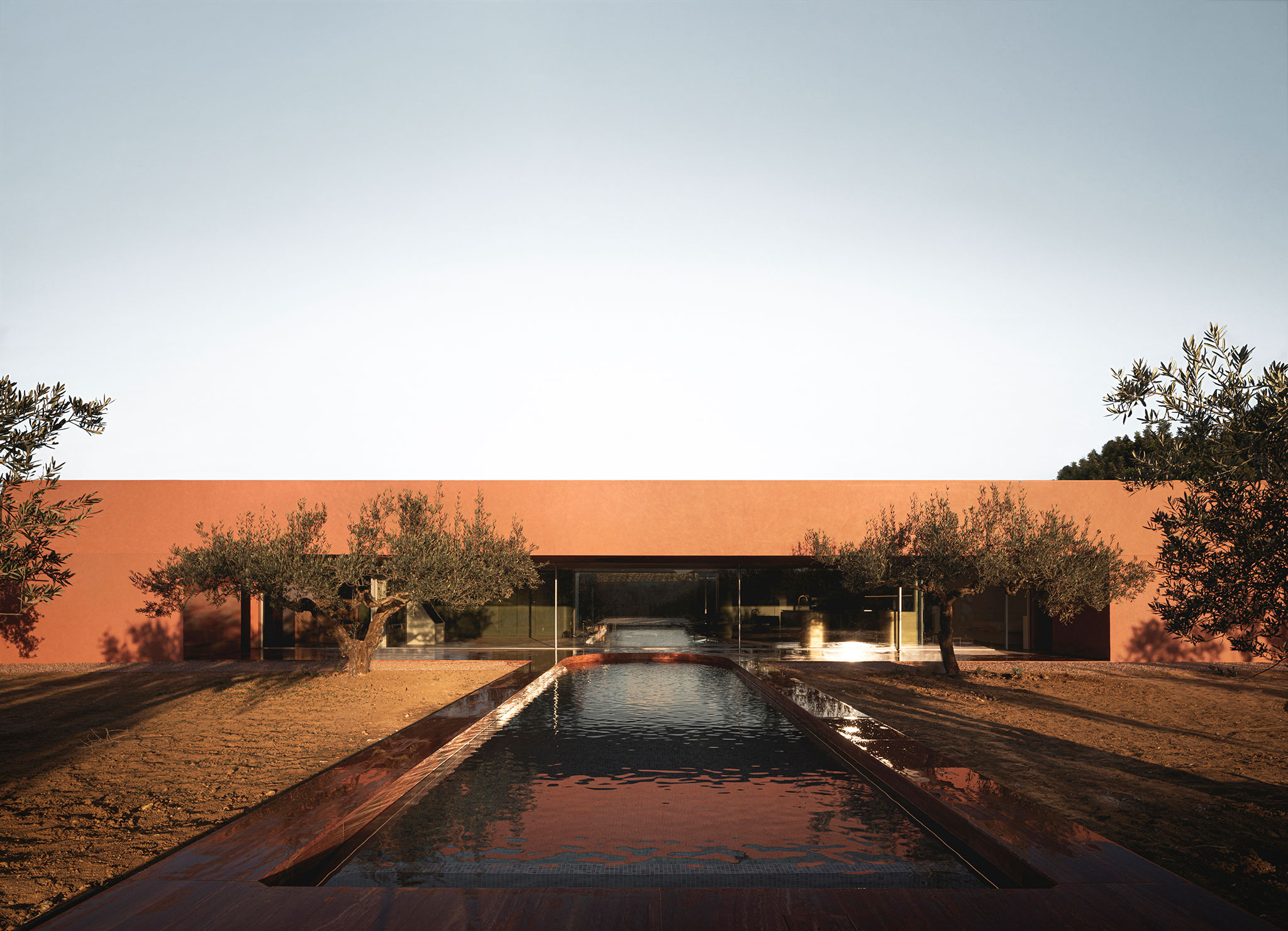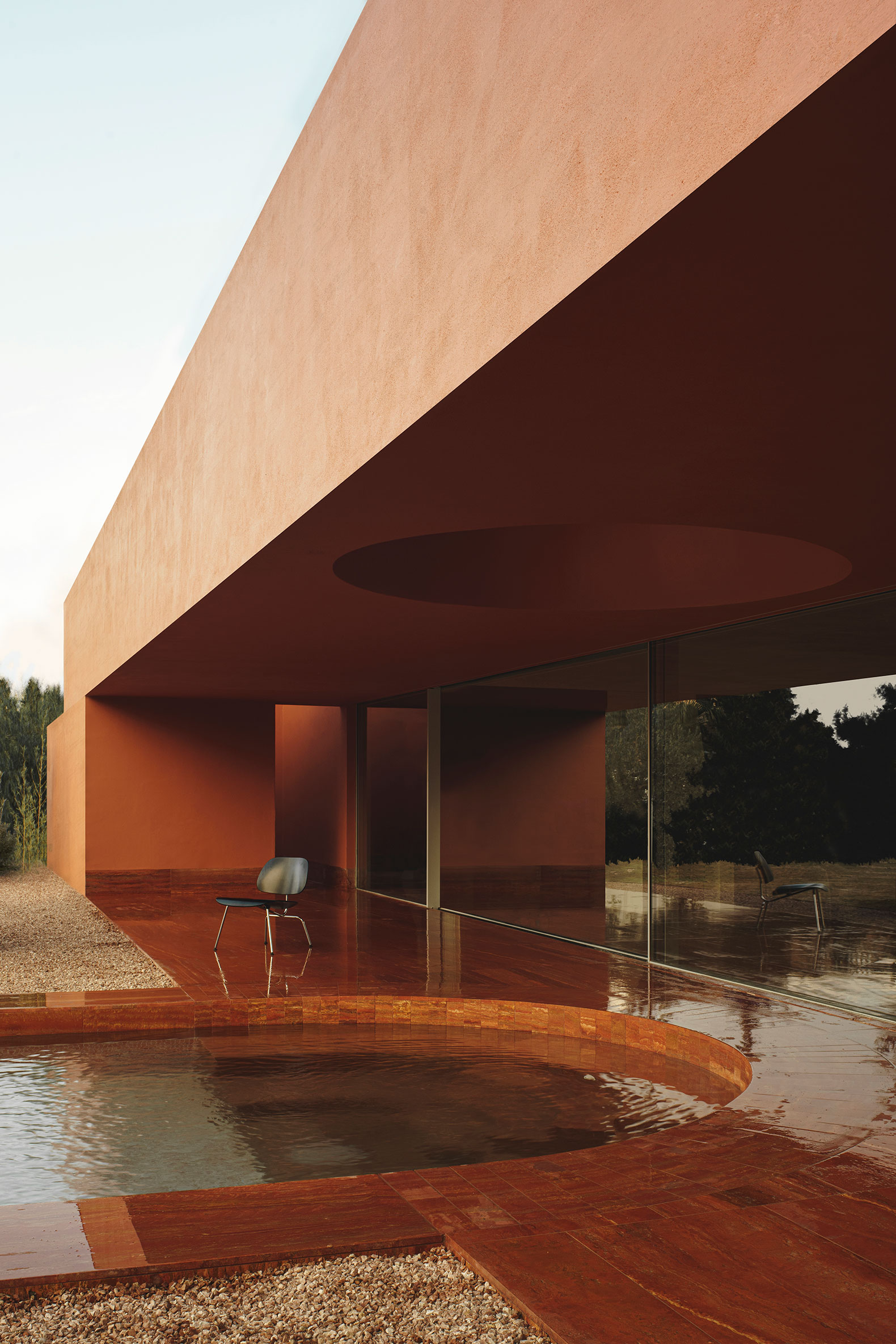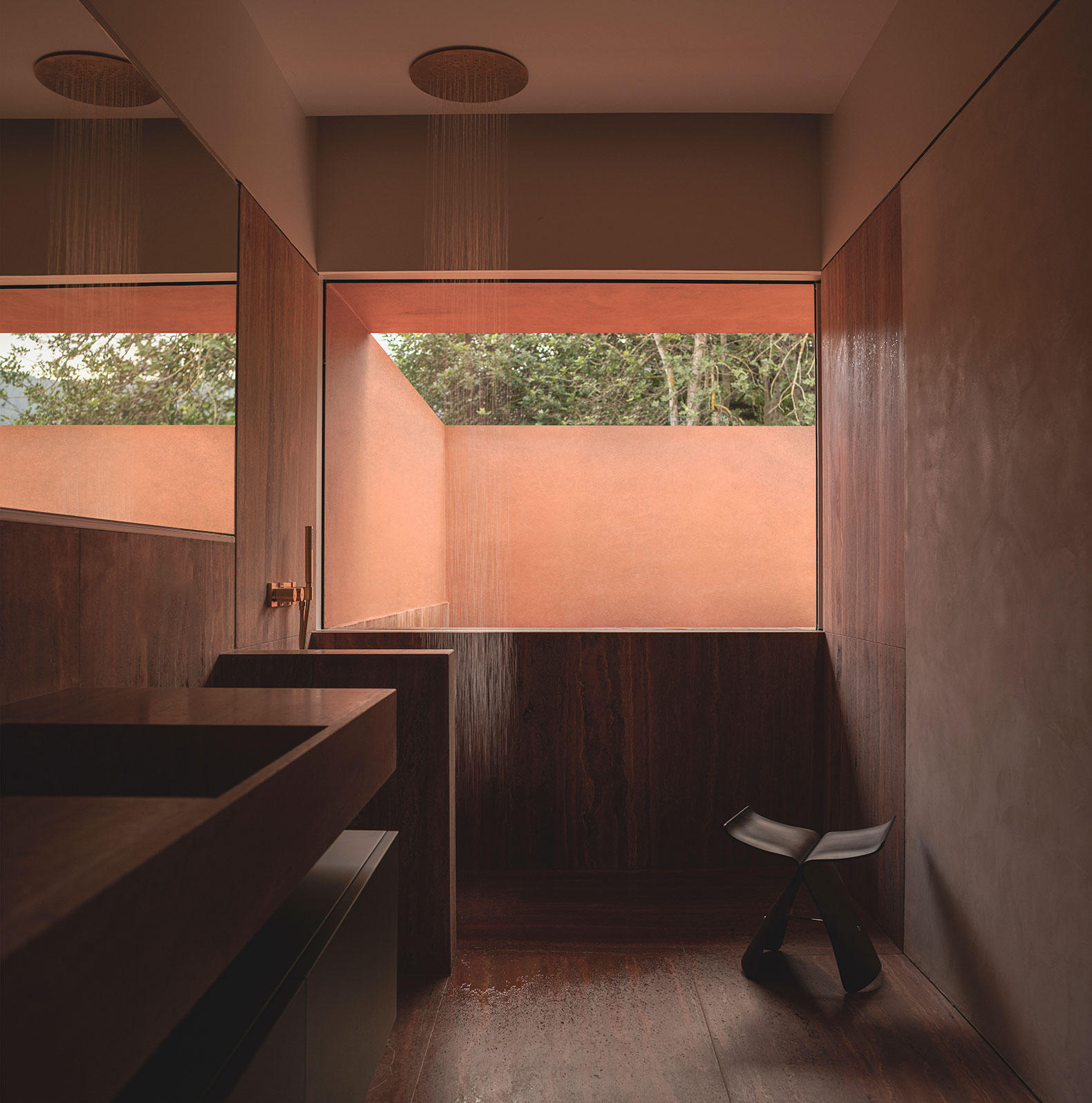The structure of the house is made following the Steel Frame structural system. An innovative system inspired by the “Balloon Frame” construction system widely used in the United States, which allows for faster and cleaner construction. The material used is a galvanized steel profile, which functions as the supporting structure of the house and at the same time forms the façade and interior partitions. In addition, to save the great light that exists in the day space, which is 18m long, a large metal truss is provided.
A very unique component of the project is the materials, colors, and textures. From the colors of terracotta tones on the floor and the façade, a good relationship with the natural environment and a unique atmosphere in tune with the place is sought.

Project description by Balzar arquitectos
The House in the Olive Grove is an amalgamation of environment, client, and architecture. The story of its inhabitants is unusual and strongly connected to the area. Quesa is a small town in the middle of the province of Valencia, originally founded by Spain’s Moorish community. The owners, from Barcelona, spent several summers in the area during their childhood. Returning to the town, they reconnected with its people and its environment, and so the story of the House in the Olive Grove began.
Location
The plot is located on the outskirts of the town and serves as a link between the urban and the rural. It is the last grove of olive trees that can be built on the periphery of the municipality, which made it an opportune site for the project.

The Olive Grove House by Balzar arquitectos. Photograph by David Zarzoso.
The project
The ground-floor property blends in perfectly with its surroundings thanks to various architectural resources. Firstly, its three courtyards open up to the skies, and the olive trees, and also grant privacy. Secondly, a wide verandah, typical of Mediterranean culture in a warm climate, protects against the heat from the West and functions as a staging post between the inside and the outside. Thirdly, a sweeping longitudinal platform with a swimming pool extends out into the olive grove and has spectacular views of the sunset. Lastly, large windows connect the entrance, garden, and courtyards with all of the spaces inside the house.
Inner-outer connection
The project is noted for the way it connects the inside with the outside. All of the inside spaces visually connect with the spectacular olive grove that is so characteristic of the region. This generates visuals, connections, and a show of light and shadows with the olive grove reigning over the house.
This connection plays out differently in each room. The day space and the entrance flow directly on from the verandah and the platform, through a large openable glass door. The en-suite bedroom, with its respective bathrooms, connects to the outside through two more-private courtyards.

The Olive Grove House by Balzar arquitectos. Photograph by David Zarzoso.
Water
Water has a strong presence throughout the house. One end of the outdoor pool is semi-circular in shape and partially covered by a vault. It extends into the verandah and out into the olive grove, which acts as the garden of the house. The inside pool with spa, bathroom showers, large windows, and outside showers make the house a real experience. Both swimming pools are heated, allowing them to be used year-round.
Materials
What makes the project different are its materials, colors, and textures. Terracotta tones predominate on the floors and the façade, blending the building into its environment. Exotic marble such as Iranian Travertine, brass, olive green joinery, and water features contrast with each other and fill the space with a unique atmosphere in harmony with the location.

The Olive Grove House by Balzar arquitectos. Photograph by David Zarzoso.
Structure
The house was built upon a steel frame structure. This is an innovative system inspired by the popular "Balloon Frame" type of building used in the United States to construct a cleaner structure more quickly. The material used is galvanized steel profiling, which acts as the load-bearing structure for the house and also supports the façade and the room partitions. Large metal frames were also used to support the 18m-length openings that allow quality light into the day space.
Energy efficiency
Energy efficiency was a priority in the project’s design. The house fulfills the Passive House concept and has low energy requirements. Passive houses have particularly high comfort levels and very low energy consumption. This is mainly achieved by applying environmentally-friendly principles: high-quality windows, sufficient ventilation, insulation, draught exclusion, and reduced thermal bridging.
































































